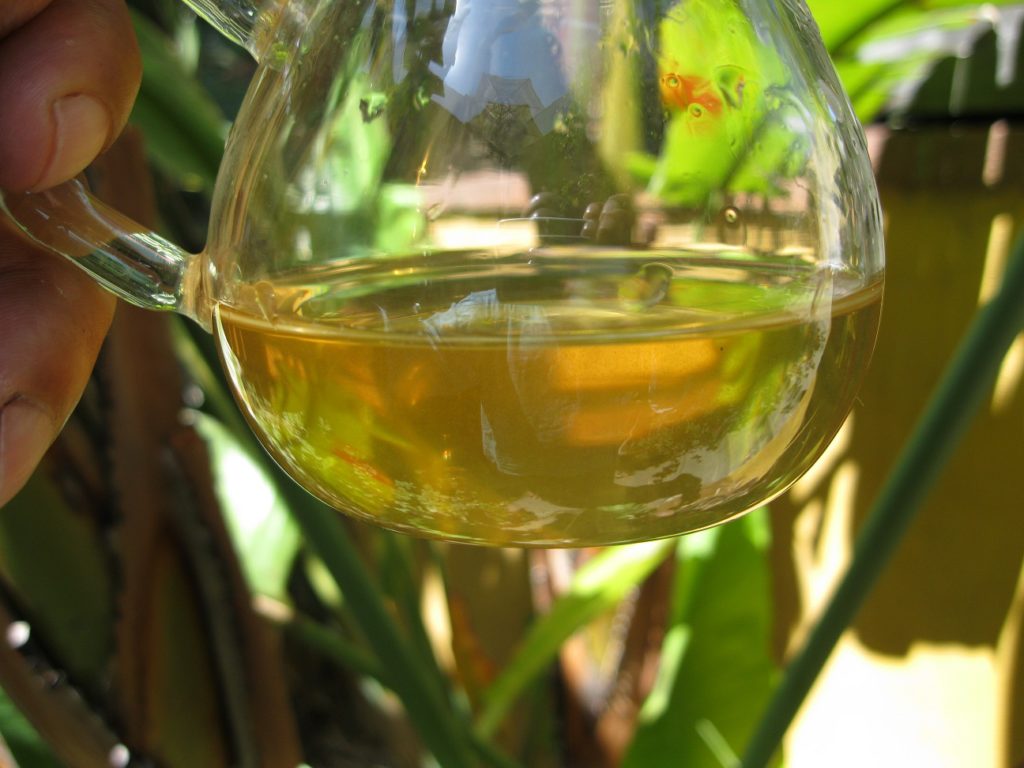On Water Temp: Young Raw Puerh

A lower water temp isn’t going to make that raw production you hate any tastier, but it can make a big difference with finer productions like dragon pearls. I know to some that this is a heresy. For older productions the use of hot water makes sense. More cooking of the leaves has to occur in order to get the stuff out. This is less so with young productions because the same stuff is in a much more active state. The concern is less with getting stuff out than with getting too much.
How do you know if you’ve gotten too much? Do your own experimenting. See if by lowering the water temp whether a truer nature of the tea is expressed. One writer, in speaking on the matter, makes reference to “scorched leaves” in the context of bitterness and astringency. She also noted mitigating factors like brewing vessel, pour-rate, and the leaving the lid on or off as the leaves cool. Much to consider…
One of the chief reasons why the hot water dogma seems counter-intuitive is because a degree of any type of cooking requires a sensitivity to the qualities of the thing being cooked. Cooking all leaves at a set temperature seems to place the standard of performance at the temp itself, as opposed to where the tea performs best based on its nature. Once raws are open, they don’t require the cooking of a ripe, rather a coaxing. This is especially the case with young raws, where the ideal water temp might more closely approach your favourite drinking temp than something unnecessarily hotter.
The Chinese mandarins like them some dainty-delicate. Dragon pearls epitomize this, as each pearl is made from carefully selected leaves. This shape, beyond being extremely convenient, confers a mandarin meaning. This is why productions usually don’t have names beyond the terrior from which they hail. The names themselves carry great mandarin appeal. This suggests to me that a heavy hand in infusing (you see I didn’t say “brewing”) is inconsistent with the dragon pearl shape. By the same token, a lighter hand shouldn’t mean that the brew is weak and tasteless. If that is so, it has less to do with the temperature of the water than it does with the overall quality of the tea itself.
There’s a Japanese gyokuro, I believe, that is being served with an ice cube. I tried that once with a puerh and it was horrible. I might keep trying. There’s nothing wrong with experimenting. Young raws tend to taste better at a lower temperature served from porcelain. This is especially the case with dragon pearls from the elegant terriors, like Bingdao, Xigui, and traditional six great mts, like Bow Village and Yi-wu Zheng Mt, not just Yi-wu.
